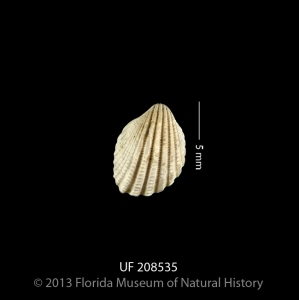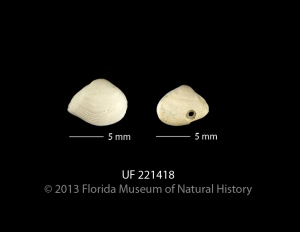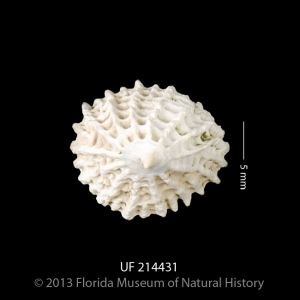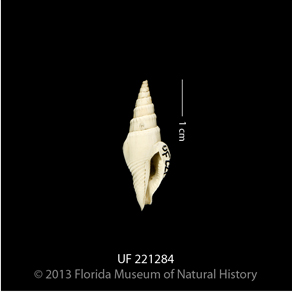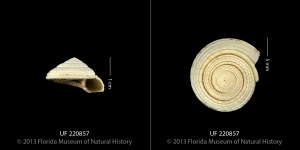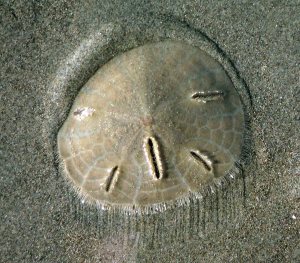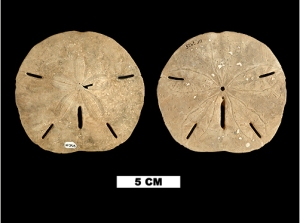
UF 2425, the test of Mellita tenuis. This specimen was found in Manatee County, Florida and is from the Late Pleistocene. (Photo © IVP FLMNH)
This Fossil Friday I would like to focus on the genus Mellita, a group of flat sand dollars (Class Echinoidea, Order Clypeasteroida). Members of this genus are restricted to the shores of North and South America, however they are found on both the Atlantic and Pacific sides of the continents. Members of Mellita feed by plowing through the surface of sand and collecting food particles. The split that resulted in two extant species of the genus, M. quinquiesperforata and M. notabilis, can be attributed to the closing of the Isthmus of Panama.
To learn more about the current distribution and phylogeography of this genus, read this paper that includes specimens from Panama.
Reference: Coppard, S.E., Zigler, K. S., Lessios, H.A. Phylogeography of the sand dollar genus Mellita: Cryptic speciation along the coasts of the Americas. Molecular Phylogenetics and Evolution. (2013). doi:10.1016/j.ympev.2013.05.028

